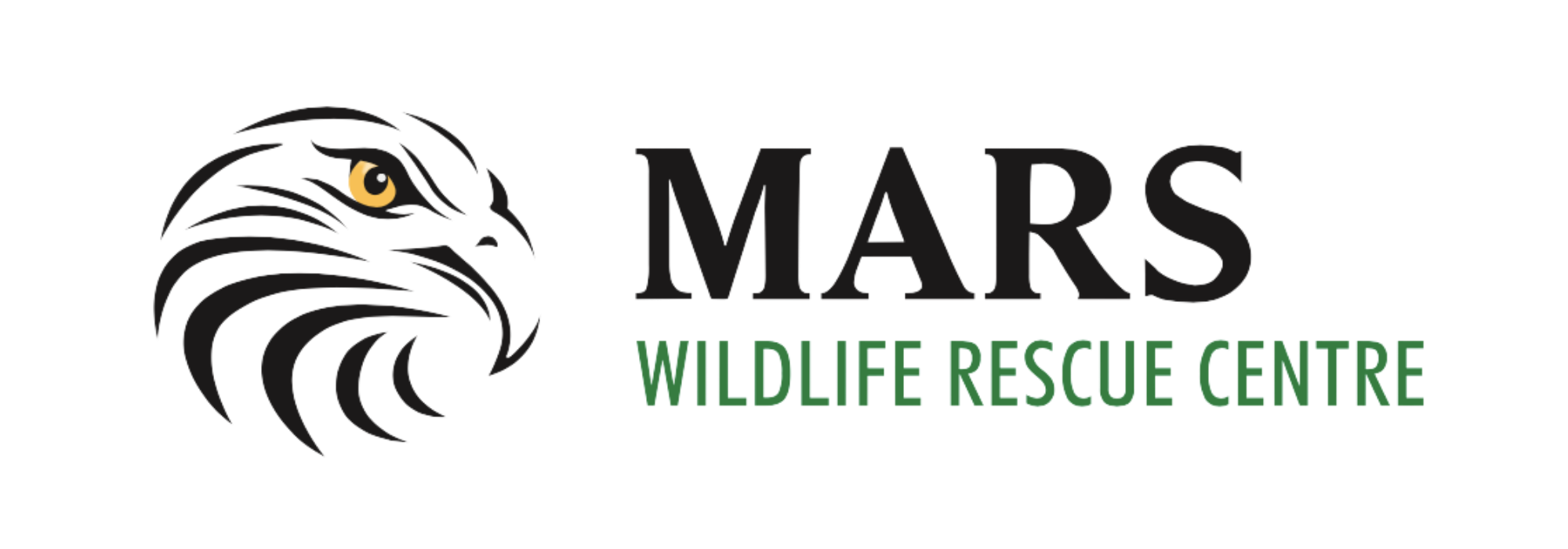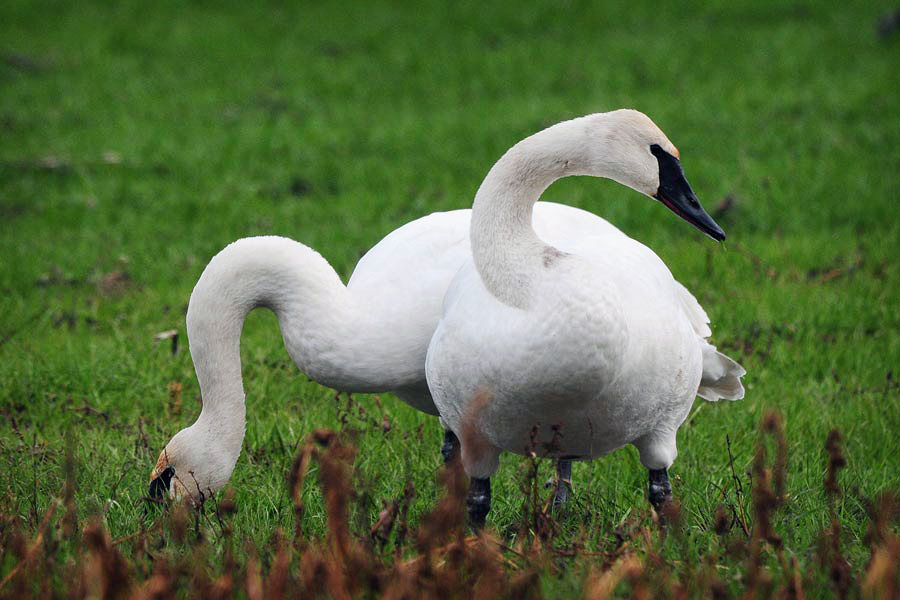MARS Moment 2013
by Sandy Fairfield, MARS Education Coordinator
The Comox Valley provides a winter sanctuary for one of wildlife’s most elegant birds, the trumpeter swan. I have lived in the valley for the past 20 years and still get a thrill when I hear the “honking” of these swans as they announce the end of another successful fall migration. In one year, these amazing birds travel between the Arctic and British Columbia; they spend their summers in Alaska, breeding and raising their young before heading back to southern British Columbia where they spend the winter preparing for their next spring migration. Then the whole cycle begins again.
There are seven species of swans worldwide with the trumpeter swan being the largest. On average, adult swans weigh 12 kilograms with a huge 2 1/2 meter wingspan. Their bodies are covered in a snowy white plumage, while a distinct black beak extends to the inner corners of their eyes along with black feet and legs. In contrast the juvenile swans have light gray plumage for their first year, their beaks are pink, and their legs and feet are a muddy yellow. Sometimes the trumpeter swans are confused with the tundra swans that are similar but smaller and have very prominent yellow markings where the beak meets the inner corners of the eyes.

Adult swans are monogamous and family orientated. Juveniles stay with their parents for their first year and migrate together during this time. Two weeks ago I heard and then saw a small flock of swans – the first arrivals of this season – flying over Merville to the potato fields they visit each year. The severe winter storms we experienced in the last few weeks may have delayed many of the swans, as they often have to land until the storm has abated. As soon as the first frosts arrive in the Arctic, they must start their migration whilst there is still open water. Being such large birds they need a water “runway” to take off, which entails running along the top of the water until they can become airborne. The southern migration is particularly grueling for the family, especially the young, as they need to be in top flying condition and carry sufficient fat supplies to last them until they can make a stop to refuel. Sadly, many first year swans do not survive the rigors of migration and perish en route while others arrive weak and starving. These are usually the swans that arrive for care at our center.
Trumpeter swans have a mixed diet depending on the season. In the spring, their arrival coincides with the explosion of thousands of insects, which they consume together with newly emerging aquatic vegetation. In the winter, their diet consists of natural aquatic vegetation and insects found in the estuaries together with roots – especially potatoes – and grasses, which are provided by the Trumpeter Swan Management Program, thanks to the local farmers and their flooded fields. As the swans return to their winter-feeding grounds they gather in large social groups. Most of the daylight hours are spent in the estuaries or shallow shorelines while at night they seek the safety of the inland fields. Flocks of swans may be seen in various parts of the Comox Valley with some of the most visible areas located on the farm fields between the 5th and 17th Street bridges. While this is a great vantage point to observe these beautiful creatures, we ask that you please do not stop in this area as the swans can panic and attempt flight before they are fully prepared.
Due to their size swans are unfortunately prone to electrocution; often they have to deal with fog or high winds, both of which can interfere with their ability to avoid power lines. Trumpeter swans are also susceptible to toxins, which may have leached into the muddy waters. This can cause neurological damage, which can be witnessed by the swan spinning and falling over. Each year a group of naturalists and volunteers monitor the swans with a weekly count throughout the Comox Valley. The data collected is critical to the future well-being of the swans and their habitat. If you would like more information on trumpeter swans, or would like to volunteer, please visit www.wingtips.org for more details.
To report injured or orphaned wildlife please call 250-337-2021.

